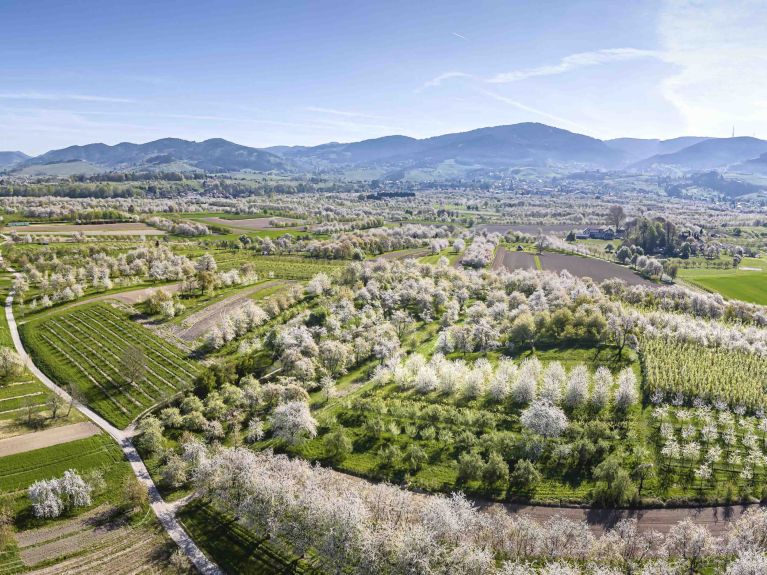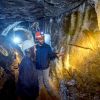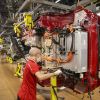Raw materials from Europe for Europe
The European Union is funding specific projects aimed at making the continent less dependent on key raw materials from third countries.

Anyone who has been to the Ortenau region in the south-west of Germany will associate the name with the Black Forest, wine growing and beautiful scenery right on the border with France. The region could soon acquire a new significance, however: it boasts considerable resources of lithium, a chemical element used in the production of batteries.
The German company Vulcan Energy is preparing to mine this natural resource – in one of a whole series of projects that the European Union has identified as strategically important. The 47 projects are to help the EU secure its own domestic supply of raw materials, says EU Industry Commissioner Stéphane Séjourné, who has talked of a “landmark moment for European sovereignty as an industrial powerhouse”.
Electric mobility plays an important role in the energy transition . That’s why the list includes above all projects that will secure the raw materials needed to make batteries: 22 projects concern lithium, while twelve relate to nickel. Other projects are focusing on graphite, cobalt and manganese. It’s about mining, recycling and processing these raw materials - while adhering to high environmental standards.
“White gold” from Germany
The lithium supplied by Vulcan Energy will be used in the European auto and battery industries. In “Lionheart”, the first project phase, enough lithium for 500,000 electric vehicles is to be extracted per year, this figure rising to one million vehicles per year in the second project phase. Executive Chair Francis Wedin says: “We want to be the first company in Europe to produce domestic lithium and the first company worldwide to produce climate-neutral lithium hydroxide monohydrate for electric vehicle batteries.” The firm is taking advantage of the natural resources available in the Upper Rhine - using geothermal heat to generate electricity.
Known as “white gold”, lithium and other important raw materials for the mobility transition have primarily come from China, Australia and South America to date. As Industry Commissioner Séjourné says, however, Europe can no longer afford to buy raw materials only beyond its own borders. This view appears to be shared by many, as 170 project partners wanted to get involved and the EU selected 47 as strategically important projects. Besides Germany, the countries taking part are Belgium, France, Italy, Spain, Estonia, Czech Republic, Greece, Sweden, Finland, Portugal, Poland and Romania.
Easier access to investment
The successful projects picked by Brussels will have easier access to investment. The EU estimates that 22.5 billion euros will be needed to turn all the ideas into reality - that is to say nearly 500 million euros per project. Now that they have been selected, the 47 projects will find it easier to obtain public funding.
The selected companies include Northern Graphite, an international company based in Canada, which intends to place battery-grade graphite onto the market. Experts from the company who work in Frankfurt am Main had submitted a proposal to the EU to use graphite from one of the firm’s projects in Namibia. The graphite would then be further processed at a facility in France. The EU approved the application. By as early as 2028, 20,000 tonnes of material for batteries are to be produced in France based on the shipments from Namibia. Such large quantities are urgently needed. The battery anode materials account for the bulk of the weight in batteries. Around 40 to 80 kilograms are needed for every electric car.
Recycling as a model for the future
The partners will be able to implement their projects quickly because, having been identified as strategically important, they benefit from much faster approval procedures. In the past, such procedures would take five to ten years in the EU. In future, it will take at most 15 months to approve many projects, while projects for producing raw materials - mines, for example - will be approved within a maximum of 27 months. This is sparking raw material production activities all over Europe that previously would have been hardly imaginable. British raw materials giant Anglo American for example plans to produce large quantities of copper in Finland from 2030. Meanwhile, Belgian materials corporation Umicore successfully applied for two projects that will use innovative recycling methods to obtain germanium, a metal that plays an important role in computer chips.
By 2030, Europe is already expected to be producing ten percent of the raw materials it needs. By then, 25 percent of raw materials are to be recycled in Europe – in the case of processed raw materials, a proportion of 40 percent is even planned.
High dependence on China
“At the very start of our most strategic supply chains are raw materials,” says EU Commissioner Séjourné, talking about the importance of the projects. He explained that they were indispensable to the decarbonisation of our continent. The basis for this step is the Critical Raw Materials Act, which the EU adopted in 2023 to secure its supply of raw materials.
A study recently published by the Federation of German Industries (BDI) shows how urgently needed such regulations are. According to the study, Germany and Europe are more than 90 percent dependent on China for certain raw materials. It also reveals that important capacities in terms of processing raw materials have been lost to other countries. The idea now is for the selected projects to change this.


